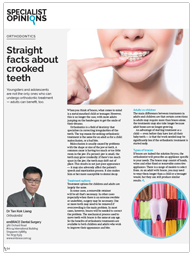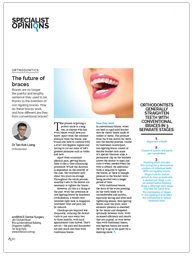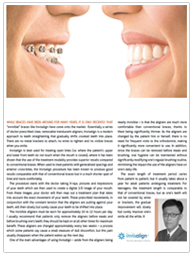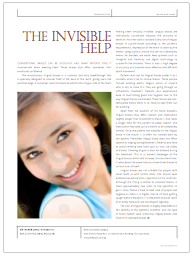Most people are reluctant to admit to having undergone aesthetic procedures.
Most people are reluctant to admit to having undergone aesthetic procedures. However, of the many treatments available, having your teeth “fixed”, which effectively means having them straightened and/or whitened, has become so common and acceptable, that hardly anyone would deny that they’ve had it done. The modern concept of straightening teeth – by fitting something into the mouth – can be traced back to the 18th century, when French dentist Louis Bourdet perfected a device called a “blandeau”, a horse-shoe shaped piece of iron. He was the first dentist on record to recommend extraction to combat crowding and improve jaw growth.
Since then the technology has changed immeasurably, and today the most convenient and advanced method to deal with a patient’s dissatisfaction with his or her teeth is to use the Invisalign system. As well as enabling you to whiten your teeth at the same time, the main advantage of the Invisalign system is the minimal impact it has on your everyday life. You can still eat the foods you like and take part in contact sport - simply by removing your Invisalign retainers and replacing them after. You can clean the aligners with a special cleaning kit, or if you want you can simply brush them with a tooth brush and then rinse them in warm water.
With the Invisalign system, your doctor will take X-rays, pictures and impressions of your teeth. This information is sent to Invisalign, who create a 3D image of your teeth. Your doctor will then create a treatment plan, including the exact movements of your teeth. Using this same technology, your doctor will even be able to show you a virtual representation of how your teeth will move with each stage of treatment.
The next stage involves producing a number of custom-made, clear aligners, tailored to your individual requirements. The aligners are made of a smooth BPA -free plastic that does not irritate your cheeks and gums like traditional metal braces. The patient must wear them throughout the day, and remove them to eat or brush. While you are wearing each set of aligners, your teeth gradually start to shift into place. And because they’re virtually invisible, most people won’t even notice them.
Approximately every two weeks, you will move on to a different set of aligners. All the while your progress will be monitored by your doctor, usually every six weeks. At every stage, you will be able to see how much closer you are to having a perfect smile.
Treatment usually takes about a year for adults. For teens, the length of treatment is comparable to that of normal braces, but as your teeth are not covered by wires and brackets, you’ll be able to see the difference much quicker. For best results patients should wear the aligners for at least 20 hours a day.

























